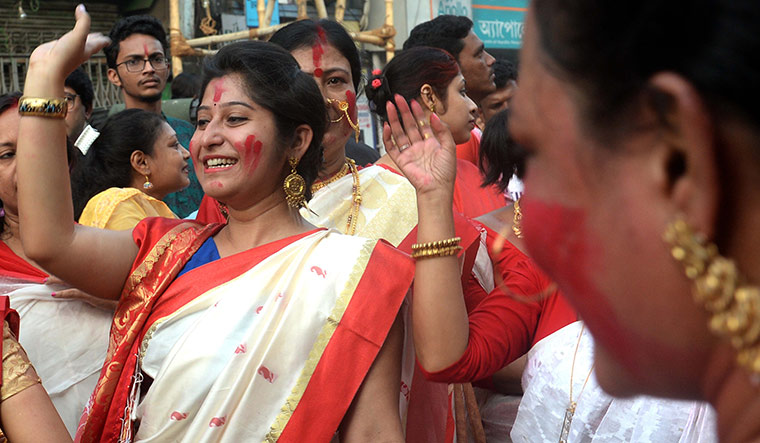The COVID-19 pandemic may be stabilising, but India could see another peak, and a far worse one, in the coming months. With the onset of winter and the upcoming festival season, the Union government once again sounded a note of caution.
"The pandemic is stabilising and moving towards a plateau. But all this could change, the gains made could be lost in the coming months as winters are approaching," Dr V.K. Paul, member (health), Niti Aayog, told the media. Paul said that winters were conducive for respiratory viruses, and that the "second peak" for COVID-19 that was being seen in certain countries signalled that India, too, was at risk. "During the Spanish flu in 1918, too, the second phase of the infection in winters was far more destructive than the first phase," he said. "In Europe and the US, new cases have been rising now, possibly due to other factors too. But the second peaks are much higher than the first," he added.
Paul emphasised that with festivals approaching, people ought to avoid gatherings, or else, there could be super-spreading events in the coming months. Young people, he said, were being overconfident, and hence, catching, and spreading, the infection more.
In anticipation of the upcoming winter months and festival season, the Union government has launched the "jan andolan" campaign to encourage people to wear masks, follow physical distancing, and maintain hand hygiene. Under the plan, communication would be targeted at people in high case-load districts, and emphasis would be on banners, posters, and high-intensity media campaigns to urge people to take the necessary precautions.
On the issue of reinfections, Dr Balram Bhargava, DG, ICMR, said that the ICMR was studying the phenomenon. Responding to a question from THE WEEK, Bhargava said that the "cut-off" for classification was being taken as 100 days, that is, if a person got the infection 100 days after the first infection. "This is being taken as 100 days since certain studies have shown that antibodies last for four months," Bhargava said, adding that results of the ICMR study was "work in progress" and results would be out soon.
The statement came on a day when the Lancet carried an article on the first confirmed case of reinfection in the US, the fifth case to be confirmed worldwide, verified via genetic sequencing. However, the article said that reinfection could occur in a short time frame - 48 days in this case - and can be more severe.
Findings indicate that exposure to COVID-19 may not translate to guaranteed "total immunity", but further research on reinfection is required.
On vaccines, Paul said that India's two indigenous vaccine candidates had completed enrollment for Phase 2, and results of this phase were expected by early November. Union Health Secretary Rajesh Bhushan said that the exact amount of expense required for vaccine procurement by mid-2021 was still not decided since the situation was evolving. "Once a vaccine candidate proves its safety and effectiveness, the prices would be decided. Government of India has enough funds for procurement," Bhushan told mediapersons. Cold chain requirement had been mapped, and projections for additional equipment were also being worked on.






